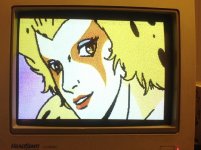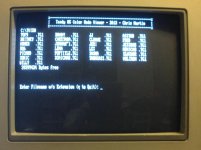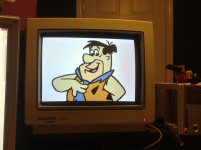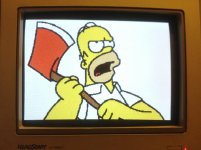Trixter
Veteran Member
Good point. I thought the argument was that ordered dither produces the best visual at 320x200. So yes, if I wanted to intra-frame compression then ordered would be a better method. Your suggestion makes me think of trying to figure out to make a series of tiles and XOR.... hmmmm....
If your pixels are close enough together and fuzzy, then I actually would argue ordered produces the best result. However, you're right, I was never saying it looked best, but rather pointing out its properties are particularly suited to animation.
Atari 2600 guy got mad at me for working on something similar to what he had done
I have no idea who you're talking about, but screw that guy. This is a hobby. If he wanted to claim some sort of world first then he should have done it already. I already dropped one of my biggest secrets (ordered dither) because I want to see something get done. Here's another secret: Deltas by tile will help your interframe compression but hurt your speed. A Tandy 1000 TL is a 286 so you can probably absorb it, but for my 8088+CGA system I'll be sticking to scanlines.
Here's another tip, drop XOR as a way to get the data onscreen. Reading from display memory is too slow. Change as little bytes as possible. We used XOR in Grind and wondered why autodesk animator .FLI files always seemed to perform better.
I had a melt-down today though and lost my whole system - luckily my programs are all saved, but my development rig has to be reimaged
This is why I have two drives on any vintage system I'm currently using actively -- one to use, and one as the backup ("XXCOPY src dst /clone /yy /zy" works well as a local filesystem rsync clone). And a packet driver and mTCP so I can make differential backups using pkzip to send off-site as a backup ("pkzip -i -r -p -es -o -xf:\backups\c\backup\5160dev.zip c:\backup\5160dev f:\backups\*.*" if you're curious).





